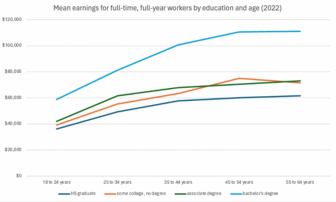![]() Then New York City Mayor Michael Bloomberg got it right when he wrote in a Financial Times column:
Then New York City Mayor Michael Bloomberg got it right when he wrote in a Financial Times column:
The most creative individuals want to live in places that protect personal freedoms, prize diversity and offer an abundance of cultural opportunities. A city that wants to attract creators must offer a fertile breeding ground for new ideas and innovations. … Economists may not say it this way but the truth of the matter is: being cool counts. When people can find inspiration in a community that also offers great parks, safe streets and extensive mass transit, they vote with their feet.
Our research on the changing American economy has led us to conclude that, quite simply, in a flattening world where work can increasingly be done anyplace by anybody, the places with the greatest concentrations of talent win. The new path to prosperity is concentrated talent.
One might ask “what does quality of place have to do with good-paying careers for all?” The answer is talent is mobile and increasingly where they go high-wage, knowledge-based enterprises follow. In his Financial Times article Bloomberg also wrote: “I have long believed that talent attracts capital far more effectively and consistently than capital attracts talent.”
Concentrated talent increasingly is what attracts high-wage employers. Talent is also entrepreneurial, so where it is concentrated increasingly are the places with the most high-wage business start-ups. So talent concentration is essential to high-wage job creation.
And where you have concentrations of high-wage workers you get increased demand for local services. From buying and fixing up homes and second homes, to car and boat purchases to increased demand for retail and hospitality concentrations of professionals and managers are driving local economies just as high concentrations of high-wage factory workers did in the past.
Economies are regional. States and municipalities are political jurisdictions, they are not economic units. State economies can best be understood as the sum of their regional economies.
The evidence from around the country is that quality of place is an––if not the most––important component in retaining and attracting talent. Places with quality infrastructure, basic services and amenities are the places that retain and attract talent the best.
It is also clear that the desirable mix of infrastructure, basic services and amenities differ from region to region. What makes small towns and rural communities attractive places to live and work are different than what makes big metros and their big cities attractive places to live and work. So Michigan’s diverse regions need the resources and flexibility to develop and implement their own strategies to retain and attract talent. It’s the key to their future economic success.
The places where talent is concentrating are increasingly big metros with vibrant central cities. Central cities because mobile talent increasingly wants to live in high-density, high-amenity neighborhoods where you don’t have to own a car. Every high-prosperity state that is not energy driven has an even higher prosperity big metropolitan area that has a high proportion of residents with a four-year degree or more. Michigan won’t be a high-prosperity state unless metro Detroit and metro Grand Rapids are able to compete with national talent magnets like metro Chicago and metro Minneapolis.
These are the placemaking policies that matter most to Michigan and its regions retaining and attracting talent:
- Welcoming to all. Talent is both diverse and mobile. If a place is not welcoming, it cannot retain and attract talent. People will not live and work in a community that isn’t welcoming. That means state policies that provide everyone with basic civil rights and treats everyone the same no matter where they are born, their sexual orientation, race, religion or ethnic background.
- Increased public investments in the provision of quality infrastructure, basic services and amenities as a state, regional and local priority
- Understanding that economies are regional and each region needs the flexibility to develop and implement their own talent retention and attraction strategies
- A substantial increase in returning state revenue from the state to local governments in a way that encourages regional cooperation
- Removing restrictions on local government taxing authority, including local/regional sales tax option
- State and local development friendly regulations that facilitate the creation of high-density, walkable, high-amenity neighborhoods in our cities and inner ring suburbs.







